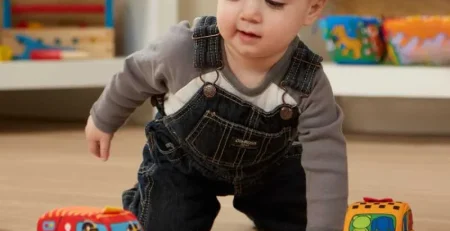1. Potential Trends for Viral Toys in 2025
a. Technology-Driven Toys
- AI and IoT Integration: Smart toys with voice interaction and emotional feedback (e.g., AI pets, adaptive robots) may dominate. Examples include “self-learning teddy bears” that evolve through interactions with children.
- AR/VR Immersive Experiences: AR building blocks (paired with smartphones/headsets) or virtual character games (e.g., next-gen “Pokémon GO”) could thrive, blending physical and digital play.
- STEM and Coding Toys: Low-code programming kits (e.g., LEGO Robotics) and AI-enhanced science experiment sets will align with global STEM education priorities.
b. Social and IP-Centric Toys
- Short-Video Platform Collaborations: TikTok/Instagram-driven “unboxing challenge toys” (e.g., blind boxes 2.0 with NFT collectibles) may spark viral trends.
- Cross-Media IP Derivatives: Physical toys tied to hit franchises (e.g., Genshin Impact, Squid Game) will leverage “content + e-commerce” models for explosive sales.
c. Sustainability-Focused Toys
- Eco-Friendly Materials: Plant-based plastics, bamboo fiber dolls, and recyclable building blocks will appeal to Gen Z parents.
- Modular and Longevity Designs: Upgradable magnetic tile sets or interchangeable parts will extend toy lifespans and reduce waste.
d. Personalization and Customization
- 3D-Printed Custom Toys: Platforms like Amazon may adopt on-demand manufacturing for photo-generated figurines, minimizing inventory risks.
- AI-Generated Characters: Virtual companions created from children’s preferences, paired with 3D-printed figurines, could blend digital and physical play.
2. Strategic Shifts for Toy Manufacturers
a. Technology Integration and Digital Transformation
- Smart Manufacturing: Adopt Industry 4.0 tools (digital twins, AI quality control) for agile production.
- Data-Driven Design: Leverage Amazon sales analytics and social media trends (e.g., sentiment analysis on “safety” or “educational value”) to refine products.
b. Sustainability Commitments
- Material Innovation: Invest in biodegradable bioplastics and carbon-neutral supply chains.
- Circular Economy Models: Launch toy recycling programs (e.g., Mattel’s “PlayBack” initiative) for refurbishment or resale.
c. Enhanced User Experience
- Phygital Offerings: Bundle physical toys with AR game codes (e.g., Disney’s “MagicBand” concept) to boost engagement.
- Subscription Services: Monthly STEM kits with app-based tutorials and community features will drive loyalty.
d. Compliance and Safety
- Data Privacy: Ensure smart toys comply with GDPR, COPPA, and other regulations to protect children’s data.
- Global Certifications: Secure CE, ASTM, and other certifications early to leverage Amazon’s compliance-driven algorithms.
3. Platform Strategies (e.g., Amazon)
a. Precision Marketing
- Use A+ Content to highlight tech features (e.g., AR demo videos) and host live-streamed toy demos.
- Offer Prime-exclusive bundles (e.g., coding robots + online courses) for premium positioning.
b. Social Commerce Synergy
- Partner with TikTok for shoppable challenges (e.g., “DIY toy hacks” with direct Amazon purchase links).
- Engage parenting influencers via the Amazon Influencer Program for authentic reviews.
c. Logistics Localization
- Deploy FBA warehouses in high-growth markets (e.g., Southeast Asia) to expedite delivery for holiday campaigns (Diwali, Singles’ Day).
Conclusion
By 2025, the toy industry will hinge on tech integration, sustainability, and hyper-personalization. Manufacturers must prioritize agile innovation, digital workflows, and eco-conscious practices. Platforms like Amazon will act as trend accelerators, bridging data insights, social buzz, and global logistics to capture both child-centric fun and parent-approved value.



Leave a Reply
You must be logged in to post a comment.